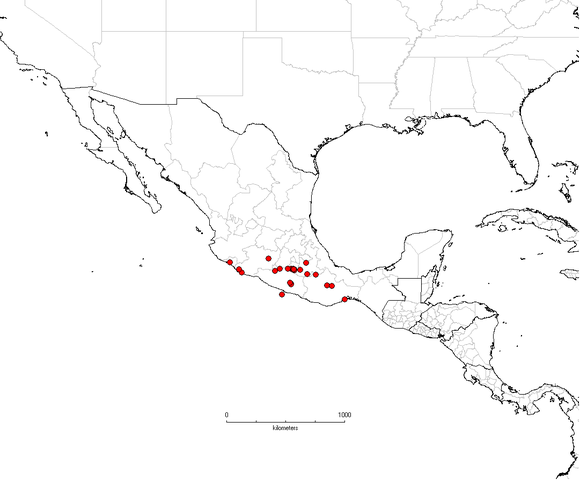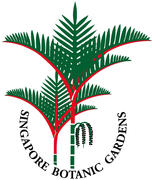Nomenclature
Porana nutans (Moç. & Sessé ex Choisy) O’Donell, Lilloa 30: 62 (1960). – Ipomoea nutans Moç. & Sessé ex Choisy in DC., Prodr. 9: 368 (1845). – Calycobolus nutans (Moç. & Sessé ex Choisy) D.F.Austin, Ann. Missouri Bot. Gard. 58: 244 (1971). TYPE. Mexico. unpublished plate by Sessé & Moçiño (lecto G!, designated by Staples (2006: 456); copy US!)
Dufourea? velutina M.Martens & Galeotti , Bull. Acad. Sci. Bruxelles 12(2): 259 (1845). – Prevostea? (Dufourea?) velutina (M.Martens & Galeotti) Walp., Repert. Bot. Syst. 6: 742 (1846). – Porana velutina (M.Martens & Galeotti) Hallier f., Bot. Jahrb. Syst. 16: 538 (1893). – Turbina velutina (M.Martens & Galeotti) Roberty, Candollea 14: 26 (1952). – Calycobolus velutinus (M.Martens & Galeotti) House, Bull. Torrey Bot. Club 34: 144 (1907). – TYPE. Mexico. “sur la route de Tehuacan à Oaxaca, près de la Venta de Aragon, à 3000 pieds, iv 1840,” Galeotti 1380 (lecto BR!, sheet 2˚ designated here; isolecto BR! [sheet 1˚], G!, P!, W!).
Breweria mexicana Hemsl., Biol. Centr.-Amer. Bot. 2: 400 (1882). – Turbina mexicana (Hemsl.) Roberty, Candollea 14: 26 (1952). – TYPE. Mexico. [Oaxaca] Sierra San Pedro Nolasco, 1843–1844, Jurgensen 623 (holo K!; iso BM! G!, G-BOIS!).
Breweria mexicana Hemsl. var. floribunda Villada, Naturaleza (Mexico City) ser. 2, 2: 127. tab. 7 (1892). – TYPE. Mexico, [Guerrero] montañas de Cacahuamilpa, Villada s.n. (lectotype: the plate in the protologue).
Calycobolus pringlei House, Bull. Torrey Bot. Club 34: 145 (1907). – TYPE. Mexico. Morelos: Yautepec, 21 Nov 1903, Pringle 8751 (holo US; iso BM, E, G(×4), GH, HBG, K, L(×3), M, MO, NSW, NY, S, UC).
Description
Staples, G.W. & D.F. Austin. 2009. Revision of neotropical Calycobolus and Porana (Convolvulaceae). Edinb. J. Bot. 66: 133–153.
Biogeography, Ecology and Natural History

Mexico, highlands of Colima, Guerrero, México, Michoacán, Morelos, Oaxaca, and Puebla. (map).
Reported from a
variety of habits such as deciduous forest (selva baja caducifolia),
disturbed tropical deciduous forest, desert thorn forest, laderas cerro
yesoso, rocky hills, hot barranca, dry river bed, streambanks, and steep
hills near the Pacific coast, among vegetational associates including Bursera, Ceiba, Cordia, Haematoxylum, Ipomoea, and Pseudosmodingium. Soil types have been
noted as rocky, limestone hills, and gypsum area. Elevation: 150–1,650 m.
|
Months |
Jan |
Feb |
Mar |
Apr |
May |
Jun |
Jul |
Aug |
Sep |
Oct |
Nov |
Dec |
|
Flowering specimens |
6 |
2 |
– |
4 |
– |
– |
– |
– |
– |
1 |
5 |
7 |
|
Fruiting specimens |
5 |
– |
– |
3 |
– |
– |
– |
– |
– |
2 |
3 |
1 |
Staples, G.W. & D.F. Austin. 2009. Revision of neotropical Calycobolus and Porana (Convolvulaceae). Edinb. J. Bot. 66: 133–153.
Other information
As the lengthy synonymy attests, Porana nutans is a variable species in several characters, particularly the trichome density and coloration, leaf size, and flower size and abundance. We have adopted a broad taxonomic concept that accommodates the observed phenotypic variability in one species; perhaps field study of living plants will enable recognition of infraspecific variants but at the current level of knowledge, based solely on herbarium material, we do not think it appropriate to recognise subspecies or varieties.
Authorship for webpage


Add new comment